To continue the previous post’s theme of “bear cub 101” I will talk about mothers with older cubs. All bears keep their cubs for several summers, with the black bear being the shortest interval at 1.5 years. Grizzly bears usually keep their cubs for 2.5 years and separate sometime during the 3rd summer. Many bear experts believe that bears keep their cubs longer in places where conditions are harshest, so one wouldn’t expect coastal grizzly bears of the Katmai Coast to keep their cubs any longer than 3 summers because of the rich food sources such as salmon and other seafood like clams and beached whales, but this isn’t the case. I often see mothers kick their cubs out at the beginning of the 4th summer, and sometimes even into the fifth summer! As I watch these bears I have come to realize that being a bear here is not necessarily easier than a place with less food like Yellowstone, Denali or the arctic because of the density of bears. To survive here you have to learn more than what to eat and where to find it- you have to learn how to get along with lots of bears packed into a concentrated food source like a salmon stream that has enough food for lots of bears in a small space. Keeping your cub an extra year or two may be necessary to master these social skills that other bear populations do not have to learn to such a degree.
Second Summer Cubs-
Often referred to as “yearlings” cubs in their second summer are 1 1/2 years old. They look like miniature versions of adult bears, and lack the dark coats and corona (light collar) of spring cubs. These cubs are still very vulnerable to predators like wolves and other bears, and are very dependent on their mothers. It would be extremely unlikely for cubs of this age to survive on their own without their mothers.
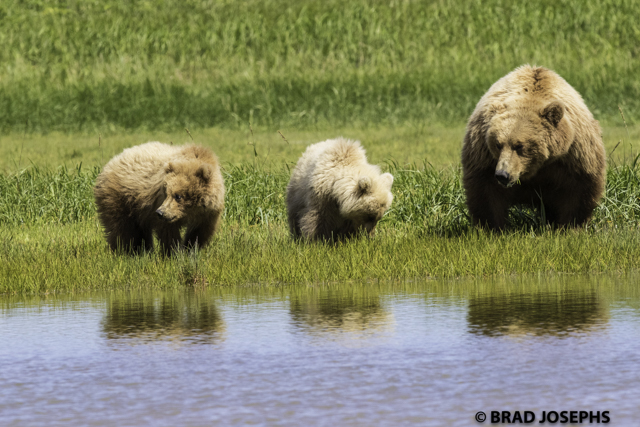
There were two families of mothers with two second summer cubs each this year that we saw regularly. I remember both families from last year. You can see than rather being much darker than their moms as they were last year, the cubs are very blonde like their mothers.
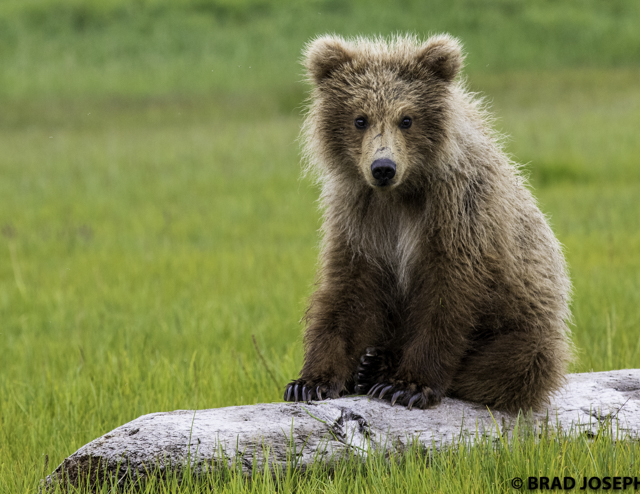
Second summer cubs are much more familiar and comfortable with everything in their environment, and in this magic region, this includes groups of bear viewers. They are still very curious and often test their limits of how close to come to us. A little stern voice deters them easily.
Third summer cubs-
Cubs of this age are often kicked out as early as May as their mothers come into estrus (heat) and can mate again. If the bears have matured well and learned from their mothers, it is possible for these bears to make it on their own, but that first summer is always a huge challenge. Large bears can still kill cubs of this size, but they are normally fast enough to outrun them. We had two families of third summer cubs. Amazingly one of the mothers had 3 cubs! It is rare to see 3 third summer cubs because the average litter size is 2, and the mortality rate of cubs is very high. Only a very good mother can support 3 cubs for this long.
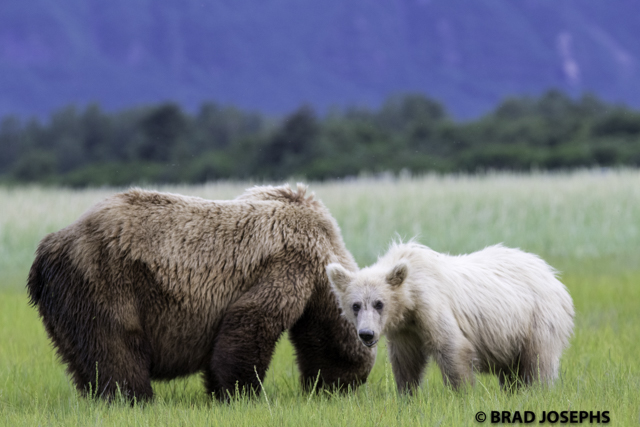
The bears of the Katmai coast, especially in the northern section, are famous for very blonde coats. Sometimes these bears appear nearly as white as a polar bear. These are not albinos, it is just super light color phase. One of the many bear families that appeared this summer was a mother with 3 3rd summer cubs, one of which was very light.
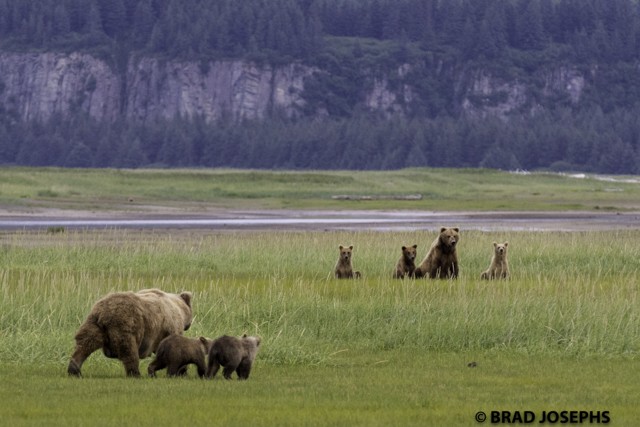
A female with two spring cubs walks away from a larger approaching bear and towards the mother with 3 3rd summer cubs. Notice how the bears in the back are all sitting down. This is bear language for “let’s get along.” She is telling the approaching mom that she doesn’t want to leave, but sharing the same space will not illicit a violent response. Also notice how the cubs are imitating their mom and sitting as well- they have learned how to get along with other bears. I always make my groups sit down around bears and it makes everyone feel more relaxed.
Fourth Summer Cubs- These bears are very lucky to have an extra year with mom. The mothers are still nursing, and do so until they are finally kicked out, but are usually capable of digging their own clams, and catching their own fish. They often wonder off and away from their mothers and interact with other bears, but the mother will come to the rescue if things get dangerous.
This year I saw something I have never seen before. A large male was following the mother at very close range (sniffing distance) and the cub was still very close, but the mother did not try to flee or defend the cub. This happened for around two weeks. I guessed the mother had come back into estrus but for some reason didn’t exhibit the usual anger and normal ferocity that scares the cubs onto their own. This thought vanished when I saw the mom and cub alone later and she was still nursing. To my understanding a female in estrus is no longer lactating. This situation is still a mystery to me and other bear guides.
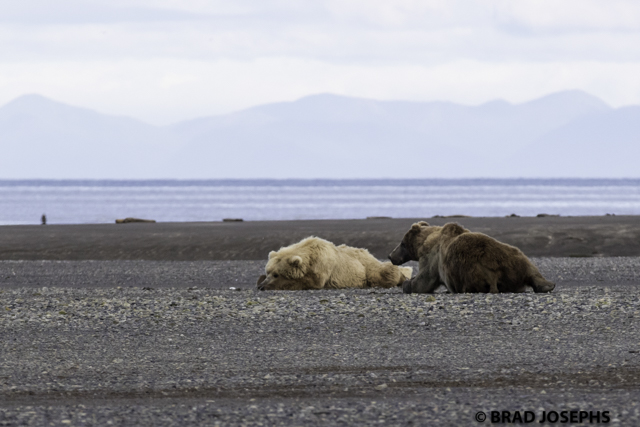
You can’t see the cub, because it laying right behind its mother, with a huge male resting just feet away. No one is sure what is going on here.
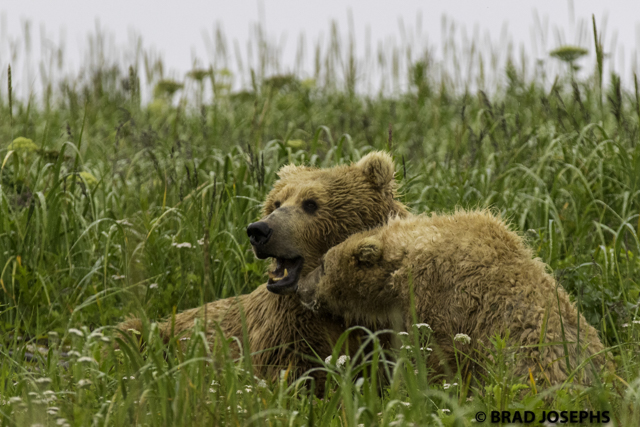
Here is the family together snuggling after she nursed the cub in one of the few moments when they didn’t have the big male nearby. We never saw them nursing when the male was close.
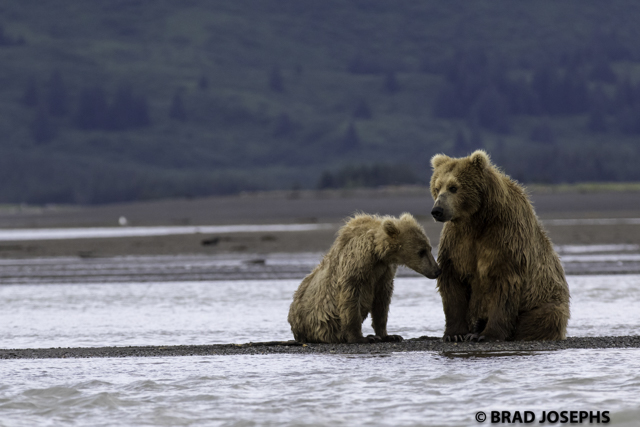
Mother and 4th summer cub in the flats looking for salmon. The cub is asking mom for milk. She did nurse a little while later but it was too far for me to photograph.
What a summer for mothers and cubs!
Keep Exploring!
Brad

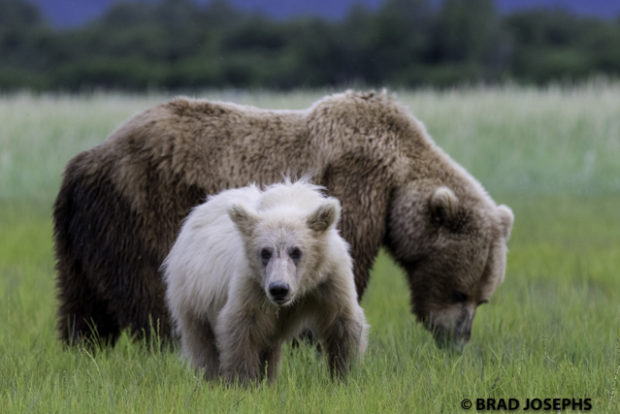
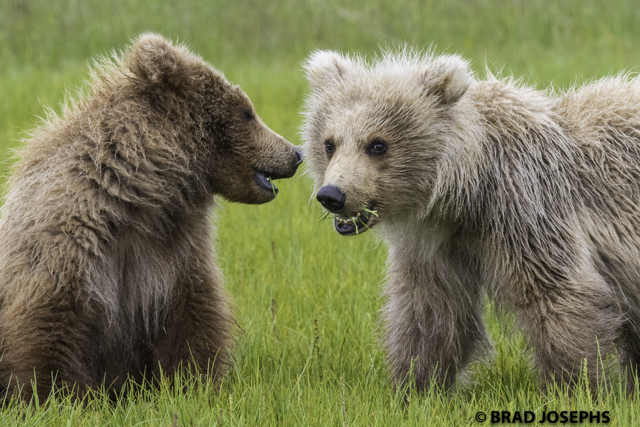
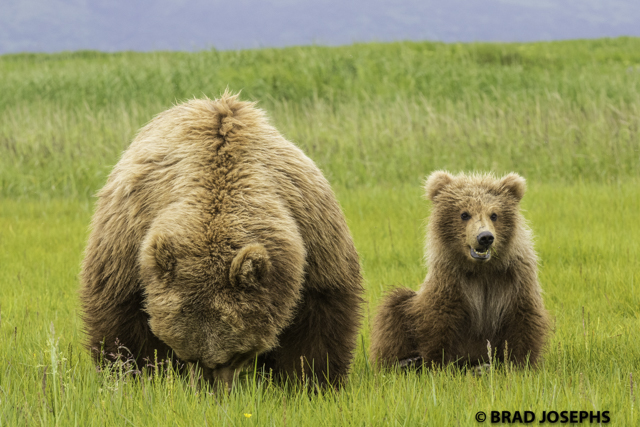
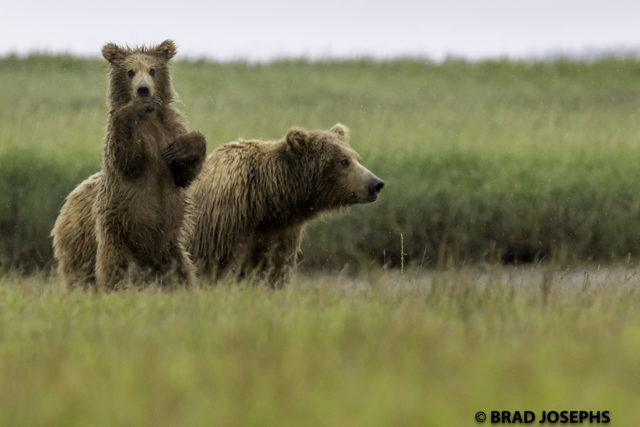
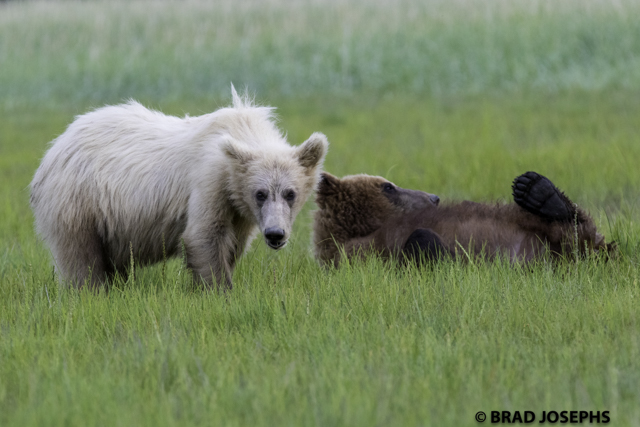
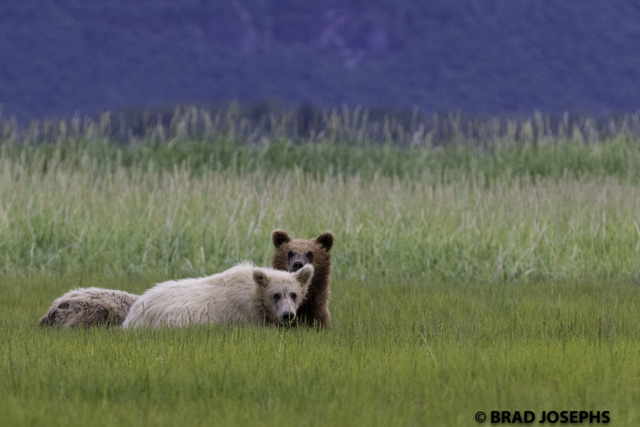
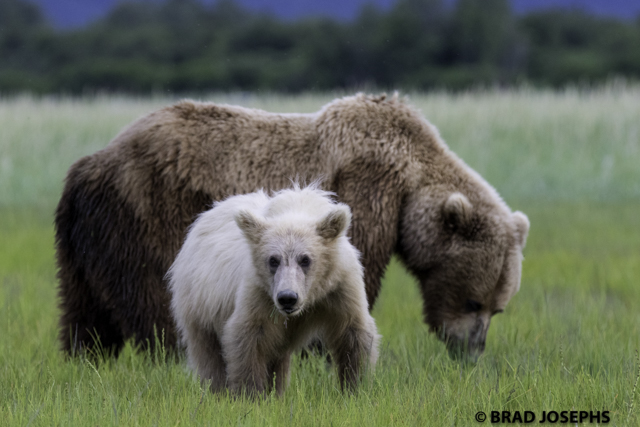
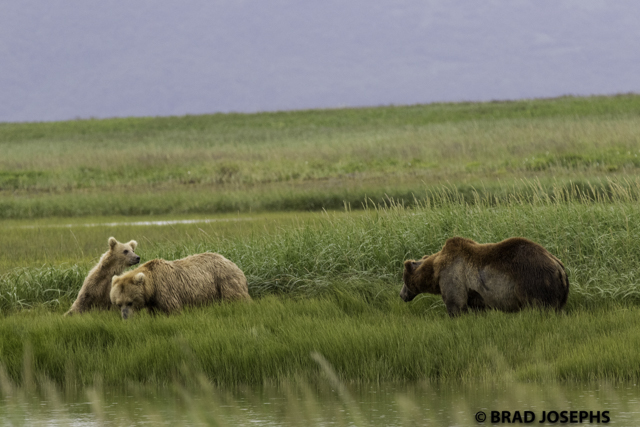
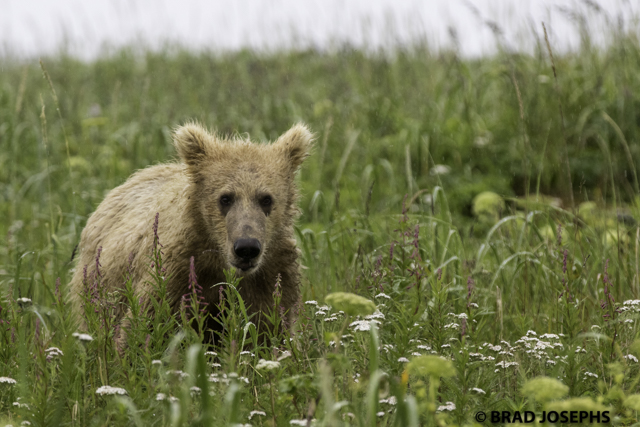
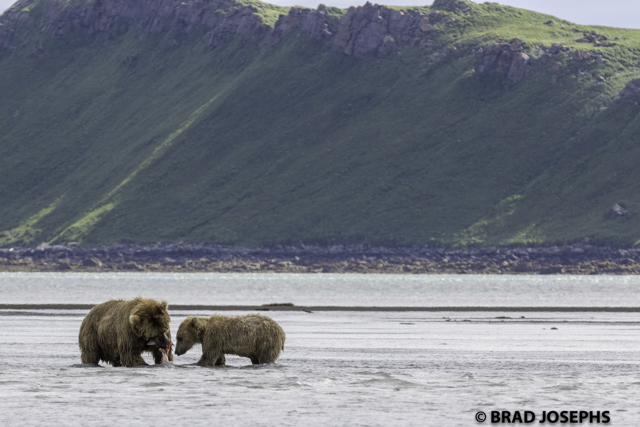
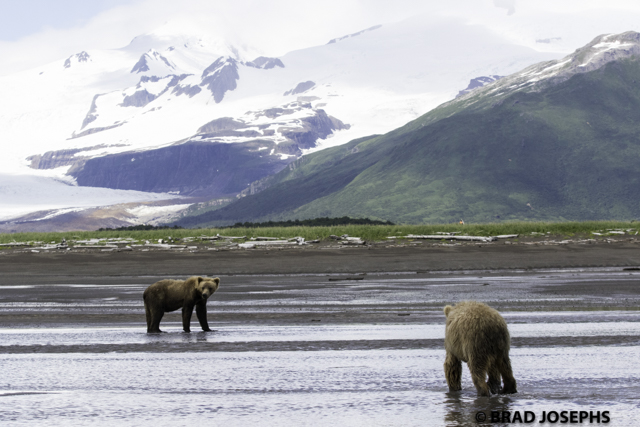
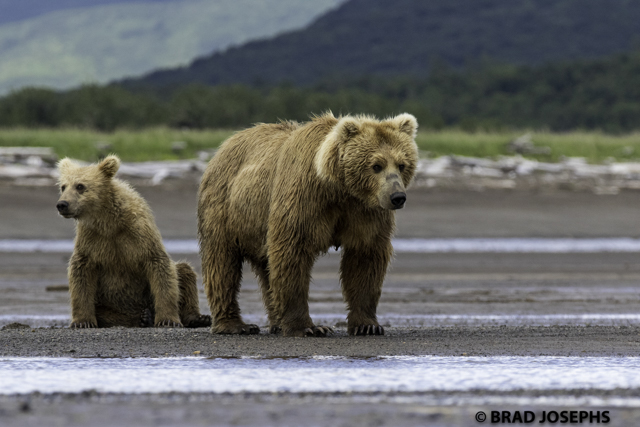
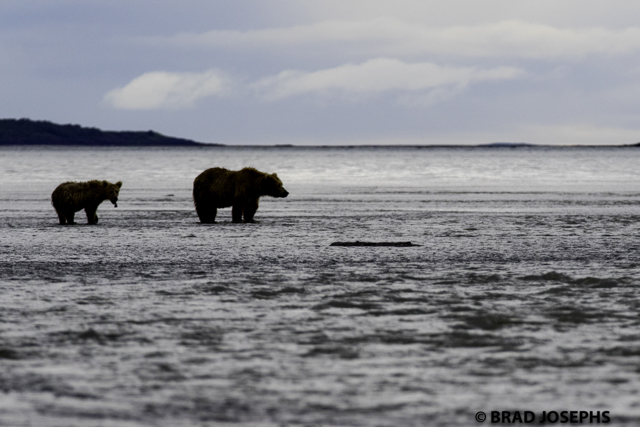

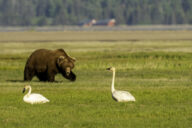

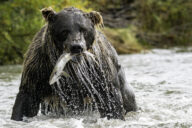
1 Comment
Great pictures -can’t wait for my trip next August